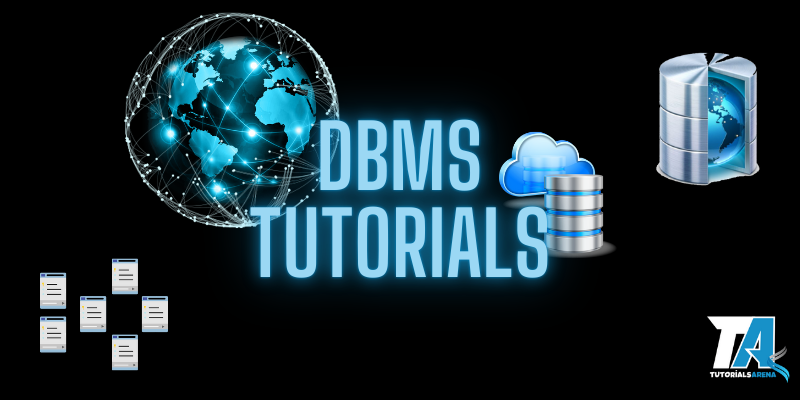Comprehensive Data Base Management System Tutorial
Database Management System (DBMS) refers to the technology used for efficiently storing and retrieving user data while ensuring robust security measures. This tutorial covers the fundamentals of DBMS, including its architecture, data models, data schema, data independence, E-R model, relational model, relational database design, and storage and file structure.

Why Learn DBMS?
Historically, data was organized in file formats, but DBMS emerged as a modern solution to overcome the limitations of traditional data management systems. A contemporary DBMS boasts several key characteristics:
- Real-world Entities: A modern DBMS uses real-world entities to design its architecture, incorporating behaviors and attributes. For instance, a school database might utilize students as an entity and their age as an attribute.
- Relation-based Tables: DBMS enables the creation of tables that represent entities and their relationships, allowing users to understand database architecture by examining table names.
- Isolation of Data and Applications: A database operates independently from its data. The database is an active entity, while data is considered passive, which allows DBMS to manage metadata (data about data) for enhanced efficiency.
- Reduced Redundancy: DBMS employs normalization rules to minimize redundancy by breaking down relations with redundant attribute values. This process is both mathematically rigorous and scientifically grounded.
- Consistency: A consistent database ensures that all relations remain accurate and consistent. DBMS includes methods to detect attempts to leave the database in an inconsistent state, providing greater reliability compared to earlier file-processing systems.
- Query Language: Equipped with a query language, DBMS allows users to efficiently retrieve and manipulate data, applying various filtering options. This capability was limited in traditional file-processing systems.
DBMS Characteristics
A database is a collection of related data, and data itself comprises facts and figures that can be processed to generate information. The primary characteristics of a DBMS include:
- ACID Properties: DBMS adheres to Atomicity, Consistency, Isolation, and Durability (ACID) principles. These concepts apply to transactions that manipulate database data, ensuring the database remains robust in multi-transactional environments and during failures.
- Multiuser and Concurrent Access: DBMS supports multiple users, allowing simultaneous access and manipulation of data. While there are restrictions when users interact with the same data item, these transactions remain transparent to the users.
- Multiple Views: DBMS provides tailored views for different users. For instance, a sales department user will have a different database view compared to a production department user, enhancing the relevance of the data they access.
- Security: With features like multiple views, DBMS enhances security by limiting users’ access to data relevant only to their roles. It offers various levels of security, ensuring users have tailored views with appropriate restrictions.
Who Should Learn DBMS?
This DBMS tutorial is particularly beneficial for computer science graduates seeking to grasp basic to advanced concepts related to Database Management Systems.
Prerequisites for Learning SQL
Before diving into this tutorial, it is recommended to have a solid understanding of fundamental computer concepts such as primary memory, secondary memory, and the basics of data structures and algorithms.
DBMS Jobs and Opportunities
The rise of modern technologies like big data, cloud computing, and IoT has significantly increased the demand for DBMS professionals. Major companies are actively recruiting IT experts with strong DBMS experience. Here are some job roles you can pursue after learning DBMS:
- Database Administrator (DBA)
- Data Analyst
- Database Manager
- Data Scientist
- Database Tester
- Cloud Database Expert
- Information Security Analyst
- Data Modeler
- And many more...
- DBMS - Home
- DBMS - Overview
- DBMS - Architecture
- DBMS - Data Models
- DBMS - Data Schemas
- DBMS - Data Independence
- DBMS - ER Model Basic Concepts
- DBMS - ER Diagram Representation
- DBMS - Generalization/Aggregation
- DBMS - Codd's Rules
- DBMS - Relational Data Model
- DBMS - Relational Algebra
- DBMS - ER Model to Relational Model
- DBMS - Database Normalization
- DBMS - Database Joins
- DBMS - Storage System
- DBMS - File Structure
- DBMS - Indexing
- DBMS - Hashing
- DBMS - Transaction
- DBMS - Concurrency Control
- DBMS - Deadlock
- DBMS - Data Backup
- DBMS - Data Recovery